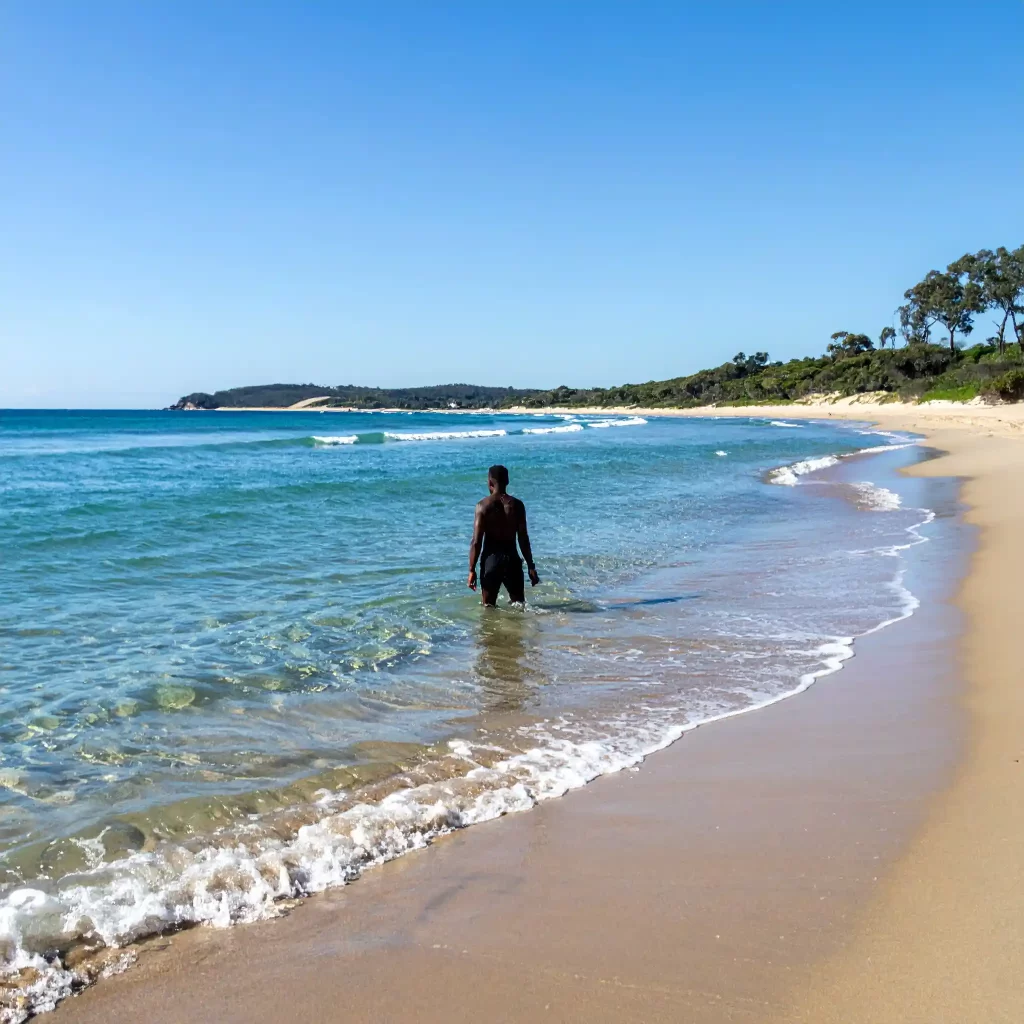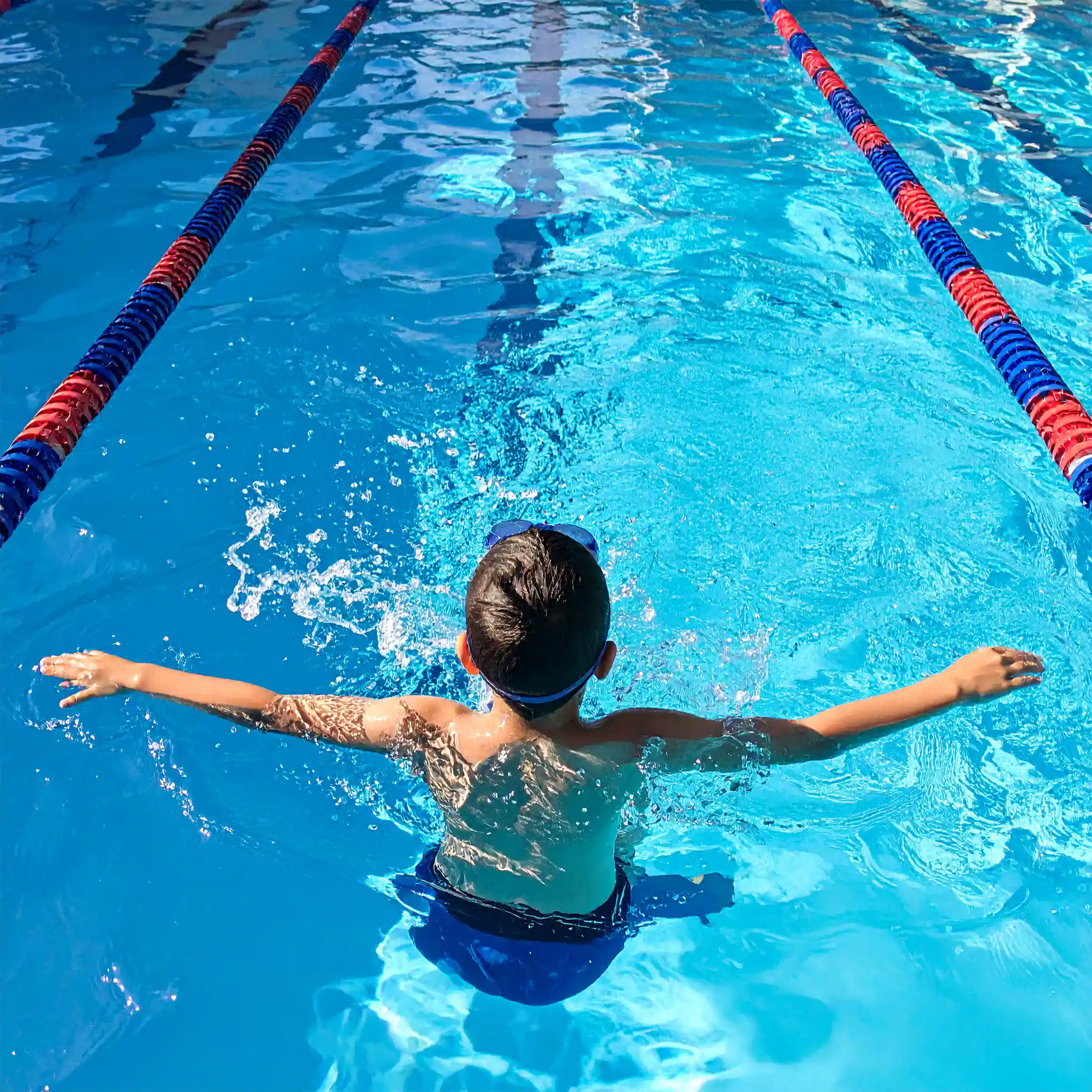Swimming isn’t the same everywhere you try it. The feel of the water (fresh vs salt water), how easy it is to float, and even the type of view underwater all change from place to place. If you’re starting out, it’s helpful to know what to expect and how each spot might feel different.
Swimming in a Pool
Pools are where most people learn to swim. The water is clear and calm. You can see the bottom and the depth looks the same all over. Pools often use chlorine to stay clean.
- The water feels warmer or just a little cool.
- Lane lines guide you and make it easy to swim straight.
- There are no surprises under the water.
It’s a safe, steady place to practice strokes and build confidence.
Swimming in a Lake
Lakes bring you out into nature. The water is fresh and does not move much, except when the wind picks up. The temperature can be chillier than a pool. The bottom might be soft, rocky, or even a little muddy.
- You might not see through the water.
- There’s a sense of calm but you might notice small fish, plants, or bugs.
- The shoreline can get deep quickly and the lakebed might dip without warning.
Check first if it’s safe to swim. Some lakes have changing conditions or low water quality.
Swimming in the Ocean
Swimming in the ocean is a new experience. The first thing you’ll notice is how easy it feels to float. Salt water gives you more lift than fresh water in pools or lakes. But the ocean brings waves, currents, and tides, so the water moves around you and sometimes pulls at your body.
- You float higher and swimming feels lighter.
- Everything changes with the weather: the water can turn rough or stay calm.
- Waves add challenge and excitement but also make it important to pay attention.
Salt water can sting your eyes and taste strange, but it gives you extra buoyancy, so resting is easier if you get tired.
Swimming at Sheltered Beaches
Some beaches are gentler than the open sea. Here, you get the lifting feel of salt water and some gentle waves. The water is usually shallow for a while, making it safer for beginners.
- Small waves come and go, but aren’t strong.
- The bottom is often sandy and the view stretches open, with space to move and play.
- There could still be jellyfish, shells, or rocks in the shallows, so step carefully.
It’s a good way to try swimming outside the pool without too much risk.

How Salt Water Changes Swimming
One big difference between the pool or lake and the sea is how much easier it is to float in salt water. Salt makes the water denser, so your body gets more support.
- Your hips and legs stay up without much effort.
- You use less energy and can relax more.
- Floating and treading water are easier than in a pool or lake.
This can build confidence as you try swimming in new places.
Side-by-Side Comparison
Pool
- Water is clear and still
- Float at a normal level
- Lane lines and tiles guide you
- No surprises under the surface
- Temperature is steady and often warm
Lake
- Water can be calm or rippled by wind
- Floating is similar to a pool, water may feel cooler
- Bottom might be unseen
- Fish, plants, or bugs nearby
- Ground may be muddy, rocky, or sandy
Ocean
- Salt water gives more lift, floating feels easier
- Waves and currents move you
- Water usually cold and changes with weather
- Sand, rocks, or seaweed underfoot
- May bump into sea creatures or seaweed
Sheltered Shorelines
- Soft, gentle waves
- Salt water helps you float easily
- Mostly sandy bottom with shells
- Water can warm in shallow areas
- Feels safer but watch for signs
Tips for New Swimmers
- Start in a pool if you can.
- Try a lake for a quiet, natural swim.
- Move to the sea or beach when you feel ready for the lift of salt water.
- Always check if water is safe before getting in.
- Never swim alone in wild water.
- Notice how your body feels in each place and give yourself time to adjust.
Every kind of water gives you a different swim. You’ll pick up new skills and find the places you like best as you go. Take it slow, enjoy the change, and stay safe.
